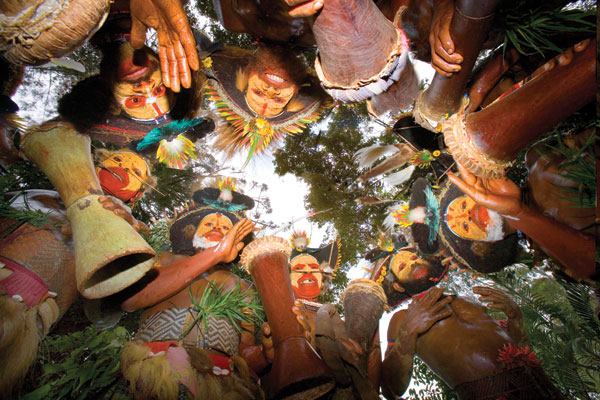Wide Angle Portraits: Use Optical Character As An Advantage
Magnification Factor
If you use a digital camera with a less than full-frame sensor, to calculate the effective focal length of your wide angle lens you will have to multiply the focal length by 1.5x for Nikon, 1.6x for Canon and 2x for Four/Thirds cameras. For example, if your lens is an 18-200mm, on a Nikon that becomes 27-300mm. On the telephoto end, that’s great because now you can fill the frame easier with wildlife subjects, sports action, and even outdoor portraits where you want a completely out of focus background. However, if you wanted an extreme wide angle perspective, the 27mm won’t give it to you.
This is why lens manufacturers have engineered a new generation of ultra wide angle lenses like a 12-24mm and even 10-22mm. These are rectilinear lenses (meaning full image to the edge of the frame as opposed to a circular image of, say, a super-wide fisheye) that are made for cameras that have smaller sensors. When multiplied by the 1.5x factor the former lens becomes 18-36mm, for example, quite a wide angle view at the shorter focal length range.
Getting Close
Take a look at photo (#1). This is a photo of a young Samburu girl in Kenya, and I moved in very close to her beadwork with a 16mm (on a full frame sensor). I was about 12-14” away. Notice how disproportionately large the beads look relative to the background. This is definitely not how it looked to my eyes, but the wide angle lens exaggerated the perspective in such a way that this is a unique type of visual statement.

All Photos © 2010, Jim Zuckerman, All Rights Reserved
Similarly, a member of the Mudmen tribe in Papua, New Guinea (#2), posed for me in his village and I moved in tight to within a couple of feet. The bizarre mask seemed appropriate for a technique that distorted it. Notice also in both this image and the one of the Samburu girl that the background is in focus. Wide angle lenses inherently have tremendous depth of field, and this is a great advantage when you want to take an environmental portrait in which the background becomes a significant part of the picture. It gives dimension to the image as well as establishes a sense of place.
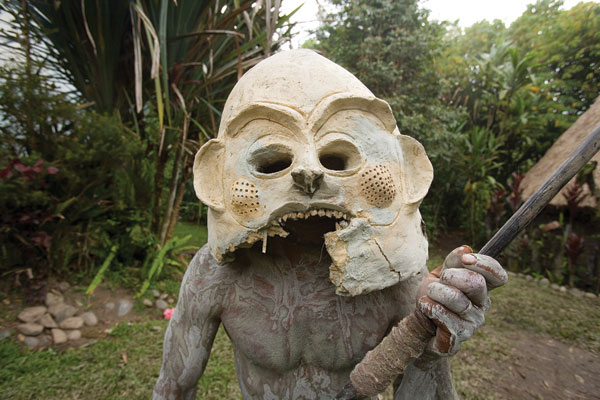
Environmental Portraits
Including the environment in a wide angle portrait is challenging in that you must deal with two important aspects—a foreground subject and the more distant background. Both have to be interesting/compelling/attractive by themselves, and they must work together. For example, the two Indian women in photo (#3) were taken with a 20mm lens that showed a large portion of the architectural tomb in which they were seated. The environment complements the women. Because of the exposure discrepancy here, I had to expose for the foreground and allow the distant landscape to become overexposed, but in this instance I think that adds an ethereal quality to this. The picture was taken shortly after sunrise.
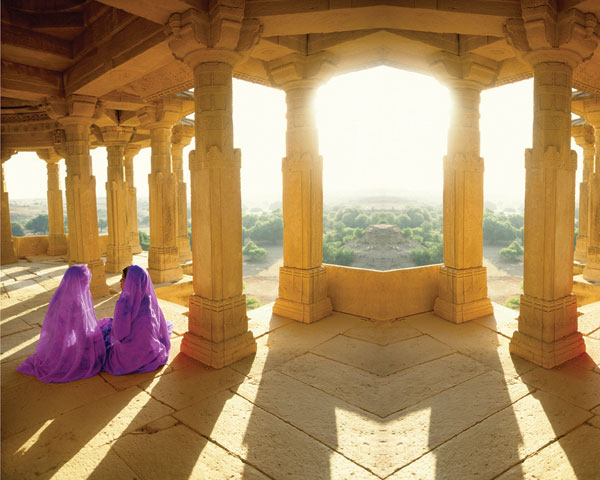
The model in photo (#4) was taken at sunset in the hills above Los Angeles. Notice the complete depth of field. I never could have captured that kind of detail and definition in the background had I been using a telephoto lens. By blocking the sun with the model, I eliminated lens flare and produced a sensual silhouette.
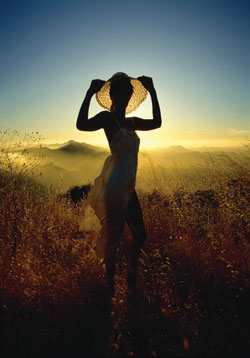
When I was in Jerusalem, I arranged to photograph a Bedouin bride, and although this may have been better in the desert, I didn’t have the time on this trip to set that up. Therefore, I photographed the young women in front of an ancient wall in the city (#5). I used the equivalent of a 21mm wide angle. (I say it this way because the original capture was made on film with a medium format camera, the Mamiya 7, and the 43mm lens I used is roughly equivalent to a 21mm wide angle lens in the digital format.) Notice how disproportionately large the model seems compared to the city in the background. I was about 2 ft away from her feet, and I used a tripod so I could close the lens down to f/32 for maximum depth of field.
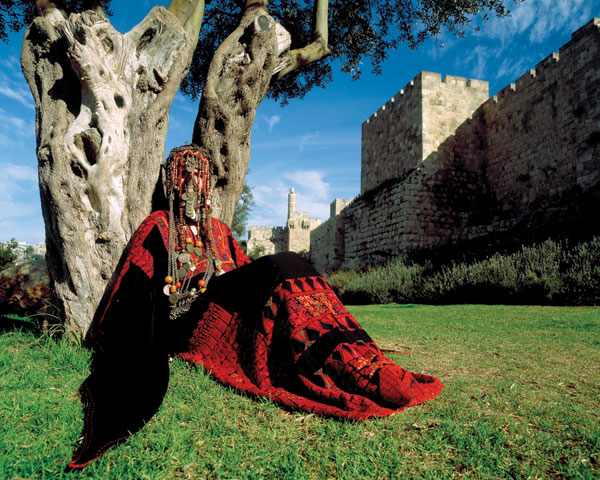
Even though wide angle lenses inherently have a great deal of depth of field, when you get extremely close to the foreground and use a lens aperture in the f/4-f/11 range, the background will not be completely sharp. Of course, the wider the lens the more depth of field you get. In the palace shot of my wife in a Carnival costume (#6), I was able to encompass the entire room with a 14mm lens and have complete depth of field while the lens aperture I used was f/2.8.
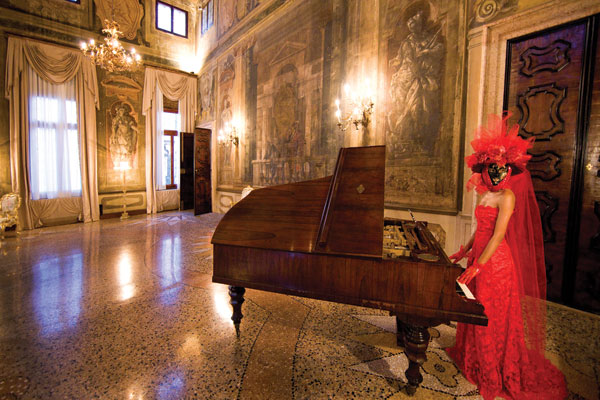
Looking Up
One of my favorite ways to use a wide angle lens for portraiture is to shoot from an extreme upward angle such as in photo (#7) of two Maasai girls in Kenya and the costumed lady on St. Georgia Island in Venice, Italy (#8). The lens elongated the models and created a striking graphic composition. It’s a very different way of viewing someone. For this to be effective, I feel, everything has to fall into place: the light, the background, and in many instances the clothing of the subject. In photo (#9), I purposely photographed the ancient stone wall of a castle behind the woman dressed as a witch in a medieval festival in Vianden, Luxembourg. I thought the earth-toned colors complemented her, and the elongation of her body put emphasis on the period costume.
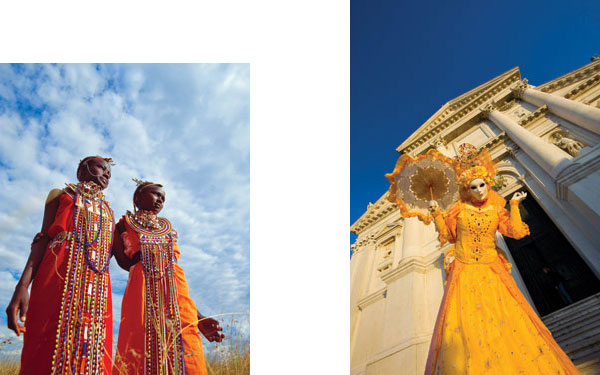
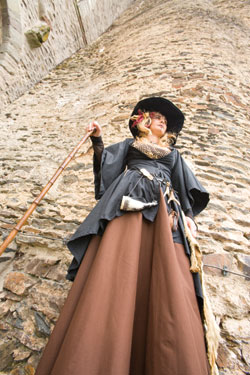
I used the same upward wide angle principle but with a different effect in the picture of the Huli tribe in Papua New Guinea (#10). For this 16mm wide angle shot, I laid on the ground and asked the group of dancers to gather over me and bend down so from my point of view their heads made a circle. I used fill flash to prevent them from becoming silhouettes. This simple technique of shooting from ground level made a dramatic and unique type of portrait.
